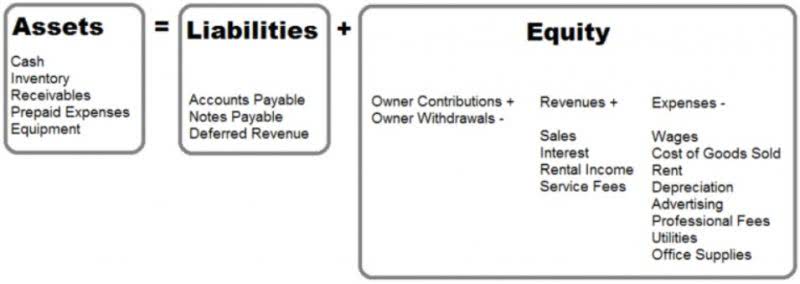Bank Reconciliation: Purpose, Example, Process

Proper documentation ensures that you maintain a clear record for future reference and auditing purposes. Once you’ve identified the discrepancies, make any necessary adjustments. Firstly, it is necessary to identify errors due to data entry mistakes, bank account discrepancies, information omission, duplication, or some other reason.
Performing Reconciliations on a Set Schedule
You need to make sure that all the deposits you’ve recorded in the books reflect in the bank statement. Match each deposit from the debit side of your record to the credit side on the bank statements while ensuring that the amounts correspond. The bank may send you a bank statement at the end of each month, every week, or even at the end of each day in case of businesses having a huge number of transactions.

Bank Reconciliation: Purpose, Example, and Process

The bank statement, on the other hand, is a document that indicates the bank balance of a company from the bank’s side of transactions. Banks send a bank statement to their customers at the end of each month detailing all the transactions that happened in their bank account during the last month. If a company has more than one bank account in the same or different banks, it will receive which of the following is not a step in preparing a bank reconciliation? multiple bank statements for each account. Similarly, it is a good practice for companies to maintain a separate bank book for each corresponding bank account. This can also help you catch any bank service fees or interest income making sure your company’s cash balance is accurate. Finding the perfect match isn’t always easy, especially when it comes to business transactions!
Step #5: Record All The Adjustments As Per Cash Book Into Your Company’s General Ledger Cash Account
We’re going to look at what bank statement reconciliation is, how it works, when you need to do it, and the best way to manage the task. This practical article illustrates the key points of why a bank reconciliation is important for both business and personal reasons. The second entry required is to adjust the books for the check that was returned from Berson. A bank reconciliation is structured to include the information shown in Figure 8.6.

Make a list of these items as they will need to be accounted for to reconcile the balances. An asset account in a bank’s general ledger that indicates the amounts owed by borrowers to the bank as of a given date. At times, you might give standing instructions to your bank to make some payments regularly on specific days to the third parties. For instance, insurance premiums, telephone bills, rent, GST, etc are directly paid by your bank on your behalf and debited to your account. This is especially common in cases where the cheque is paid in at a bank branch other than the one at which your account is maintained. More specifically, you’re looking to see if the “ending balance” of these two accounts are the same over a particular period (say, for the month of February).
What are the two items used to reconcile a bank account?
- However, this is generally not recommended, since even a slight variance could be an indicator of a major problem.
- Let’s take a look at a hypothetical company’s bank and financial statements to see how to conduct a bank reconciliation.
- Not Sufficient Funds (NSF) refers to a situation when your bank does not honour your cheque.
- Recall that the adjustments to the balance per BOOKS will require accounting entries for the items to be posted to the company’s general ledger accounts.
Before you reconcile your bank account, you should ensure that you record all the transactions of your business until the date of your bank statement. If you want to prepare a bank reconciliation statement using either of these approaches, you can take balance as per the cash book or balance as per the https://www.bookstime.com/ passbook as your starting point. Compare your personal transaction records to your most recent bank statement. First, make sure that all of the deposits listed on your bank statement are recorded in your personal record. If not, add the missing deposits to your records and your total account balance.
- Bank reconciliation in accounting is an important process that ensures your accounts all match and no financial issues slip through the cracks.
- We’re going to look at what bank statement reconciliation is, how it works, when you need to do it, and the best way to manage the task.
- While it cannot entirely erase the potential for data processing errors, using accounting software can reduce the likelihood of errors to help generate more accurate financial statements.
- On the bank side of the reconciliation, you do not need to do anything else except contact the bank if you notice any bank errors.
- If there’s an undocumented reconciling item, check if the difference pops up from a different period.
- Meanwhile, a construction company dealing with equipment and material costs may choose quarterly reconciliations to guarantee their financial processes operate smoothly.
Greg adds the $11,500 of deposits in transit to his bank statement balance, bringing him to $99,500. He also subtracts the $500 in bank fees from his financial statement balance, bringing him to $99,500 and balancing the two accounts. Bank errors are mistakes made by the bank while creating the bank statement.
- The very purpose of reconciling the bank statement with your business’ books of accounts is to identify any differences between the balance of the two accounts.
- This is because reconciling the cash book with the passbook at regular intervals ensures that your business’s cash records are correct.
- Cash management software allows businesses to gather real-time cash positions across the organization, helping to make better business decisions based on accurate data.
- Therefore, the bank book is an important document in the accounting process of a company.
- Deposits in transit are also checks that the company has presented to the bank, but the check did not clear before the preparation of the bank statement.
- This is especially common in cases where the cheque is paid in at a bank branch other than the one at which your account is maintained.

Similarly, it can also be because the preparer of the bank reconciliation has missed some expense from the bank statement. Generally, it is a good idea to prepare the bank reconciliation again and pay attention to even small amounts and not rounding off figures obtained from the bank statement. It is also a good idea to mark any expenses that have already been included in the bank reconciliation statement to avoid any errors. ABC Co. can start from the adjusted bank book balance and adjust the timing differences to it to reach the bank statement balance.
Month-end Bank Reconciliation
Once the balances are equal, businesses need to prepare journal entries to adjust the balance per books. On the bank side of the reconciliation, you do not need to do anything else except contact the bank if you notice any bank errors. On the book side, you will need to do journal entries for each of the reconciling items. John Franklin is a staff accountant for the computer hardware company, ABC Widgets, who has been tasked with reconciling the company’s cash accounts for month-end. Thirdly, account reconciliation is vital to ensure the validity and accuracy of financial statements.
